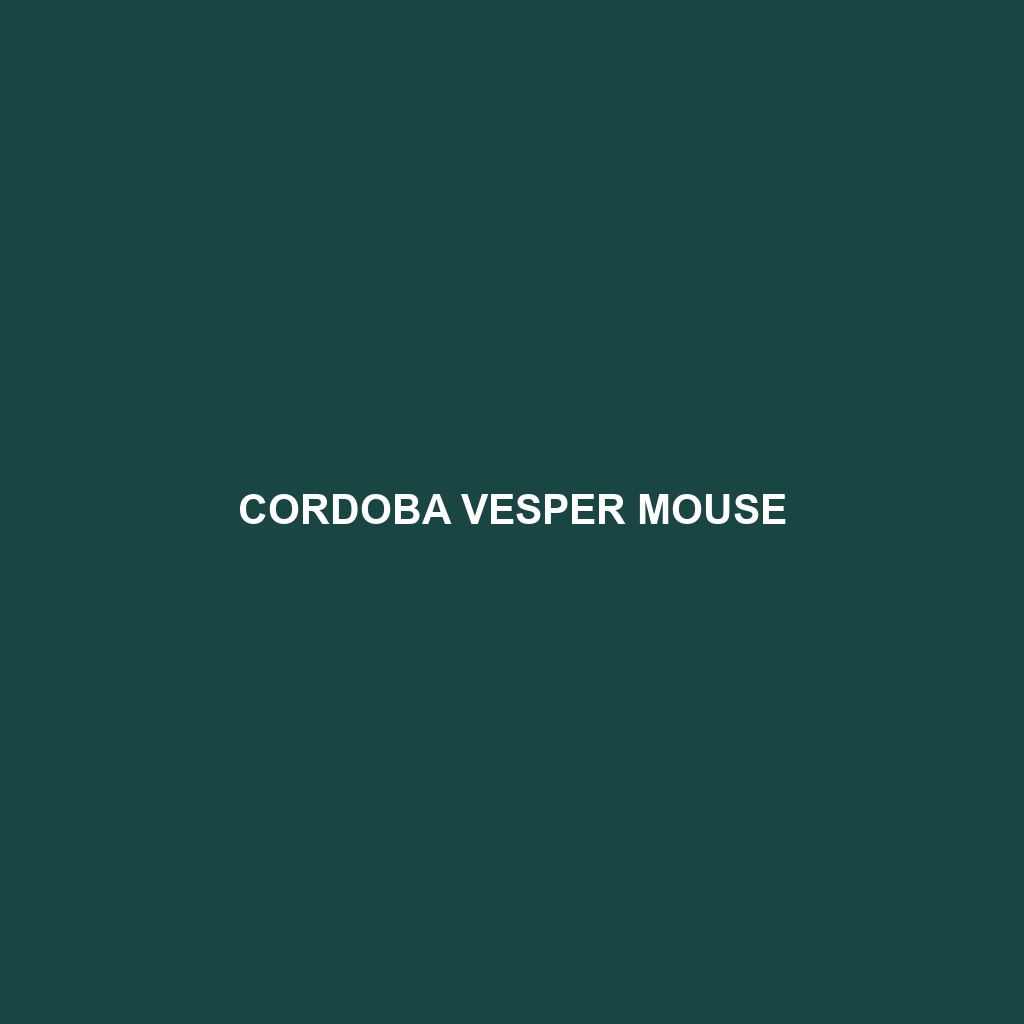Cordoba Vesper Mouse
Common Name: Cordoba Vesper Mouse
Scientific Name: Calomys laucha
Habitat:
The Cordoba Vesper Mouse is primarily found in the temperate grasslands and shrublands of Central Argentina, particularly in the provinces of Córdoba and San Luis. These mice thrive in areas with dense vegetation and well-drained soils, often inhabiting fields and agricultural lands. Their habitat preference allows them to avoid many predators while also accessing a variety of food sources.
Physical Characteristics:
The Cordoba Vesper Mouse typically measures between 8 to 12 centimeters in body length, with a tail that can add an additional 7 to 10 centimeters. Their fur is soft and predominantly light brown to gray, which aids in blending with their natural environment. A distinctive feature of this species is their prominent ears and large, expressive eyes, which enhance their ability to navigate both during the day and at night.
Behavior:
Cordoba Vesper Mice are primarily nocturnal, showcasing an array of behaviors that make them fascinating to study. They are known for their agility and ability to adapt to varying environmental conditions. These mice exhibit social behaviors, often seen foraging in groups during the night while they communicate through a series of high-pitched squeaks. Their burrowing habits also facilitate complex underground tunnels, which provide shelter and protection from predators.
Diet:
The diet of the Cordoba Vesper Mouse consists mainly of seeds, grains, and various types of vegetation. They are particularly fond of agricultural crops, which makes them a common sight in farm fields. During the warmer months, they also consume insects as a supplementary food source, ensuring they have a balanced diet that supports their energy needs for foraging and breeding activities.
Reproduction:
Cordoba Vesper Mice breed throughout the spring and summer months, typically from September to March. Females can produce several litters each year, with an average of 3 to 7 pups per litter. The young are born blind and hairless, relying entirely on their mother for warmth and nourishment until they are weaned around three weeks of age. Notable behaviors observed during the breeding season include increased territorial marking and the establishment of nesting sites within their burrows.
Conservation Status:
Currently, the Cordoba Vesper Mouse is listed as “Vulnerable” due to habitat loss from agricultural expansion and urbanization. Conservation efforts are crucial to ensure the survival of this species, focusing on preserving their natural habitats and maintaining biodiversity in the regions where they are found.
Interesting Facts:
One of the most fascinating aspects of the Cordoba Vesper Mouse is its remarkable ability to survive in varied environmental conditions. They have demonstrated adaptability by altering their foraging habits based on food availability. Additionally, they play a significant role in seed dispersal, contributing to the health of their ecosystem.
Role in Ecosystem:
The Cordoba Vesper Mouse plays a vital role in its ecosystem as both a prey species and a seed disperser. By consuming a variety of seeds and grains, they help in the regeneration of plant species, while also serving as food for various predators, including birds of prey and small mammals. Their presence indicates a balanced ecosystem, making their conservation essential for maintaining ecological health.
